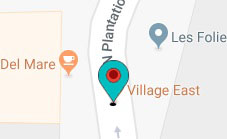Microdiscectomy
What is a microdiscectomy?
Microdiscectomy is a surgical procedure employed to relieve the pressure over the spinal cord and/or nerve roots, caused by a ruptured (herniated) intervertebral disc. A herniated disc occurs when the inner gelatinous substance of the disc escapes through a tear in the outer, fibrous ring (annulus fibrosis). This may compress the spinal cord or the surrounding nerves, resulting in pain, sensory changes, or weakness.
Anatomy of the spine
Your spine consists of 24 bones called vertebrae that are arranged one above the other and separated by inter-vertebral discs which act as shock absorbers during activity. The inter-vertebral discs consist of 2 parts, namely annulus fibrosus (outer flexible ring) and nucleus pulposus (central soft jelly–like region).
Indications for Microdiscectomy
Microdiscectomy is usually indicated in patients with herniated disc, who have not found adequate pain relief with conservative treatment. This procedure involves the use of microsurgical techniques to gain access to the spine. Only a small portion of the herniated disc that compresses the spinal nerve is removed.
Microdiscectomy procedure
The surgery is performed under general anaesthesia. During the surgery, you will be lying on your stomach. An X-ray is taken to determine the exact location of the herniated disc. A small incision is made in the skin above this location. The muscles are carefully separated to gain access to the damaged disc. A part of your spinal lamina and facet joint (bony prominences of the vertebrae) are removed to expose the nerve root. Your doctor then uses a microscope to view the herniated disc under the compressed nerve, and excises the herniated region of the disc. The muscles are released and the incision is stitched closed.
Recovery after microdiscectomy
After the surgery, you may be able to return home on the same day. You can gradually start daily activities and can return to work 1 to 2 weeks after the surgery. Your wound area should always be kept clean and dry until it heals.
Risks and complications associated with microdiscectomy
One of the major risks of microdiscectomy is the possibility of recurrence of the herniated disc. There is also a risk that the remaining portion of the disc may collapse and compress the spinal nerves. The other possible risks of this procedure include damage of the nerve root or spinal cord, unresolved pain, infection or bleeding.
Benefits of microdiscectomy
- Less muscle and soft tissue disruption
- Shorter recovery time
- Minimal post-operative pain and discomfort
- Fewer risks of complications










